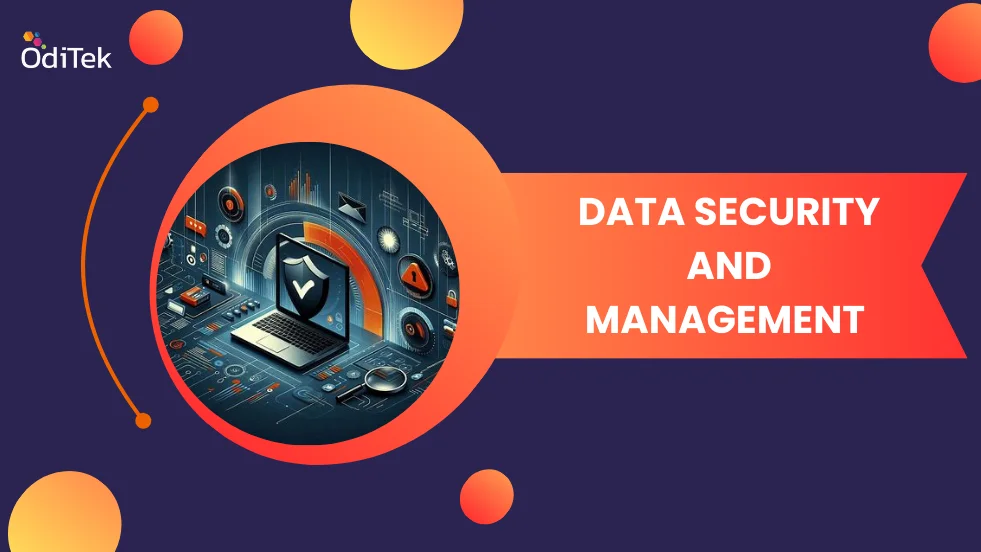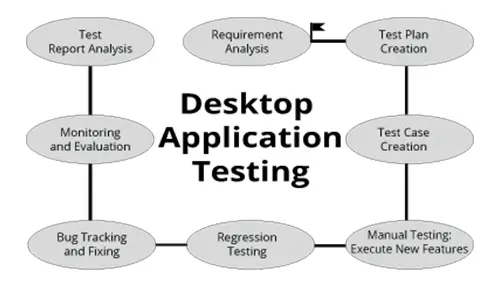Data security is more important than ever in the globally interconnected society. The increasing amount of digital transactions and online services containing sensitive data has made data security crucial. Cyber risks are increasing and affect both individuals and corporations. Examples of these threats include phishing, ransomware, and advanced hacking techniques. These risks have the potential to cause serious financial losses, identity theft, and harm to one’s reputation. Maintaining our online identities and respecting privacy requires strong data security and management solutions. Prioritizing data security is not only important but also a basic duty.
Data Security and Management
Data security and management encompass the practices and strategies that organizations employ to protect digital data throughout its entire lifecycle. It involves safeguarding data from unauthorized access, use, or disclosure, as well as preventing disruption, modification, or destruction. Key components include hardware, software, storage devices, access controls, and organizational policies. Data security ensures the confidentiality, integrity, and availability of data, while data management focuses on efficient handling, storage, and retrieval. Organizations may preserve customer trust, stick to regulatory requirements, and safeguard important assets by putting strong data security procedures in place.
The Lifecycle of Data Security Management
The lifecycle of data security management is a comprehensive process that involves several stages:
• Identification: Recognizing the types of data that need protection.
• Protection: Implementing measures to safeguard the identified data.
• Detection: Monitoring systems to identify any potential security breaches.
• Response: Addressing security incidents promptly to mitigate damage.
• Recovery: Restoring and ensuring the integrity of data post-incident.
A holistic approach to data security management ensures that all aspects of data handling—from creation to destruction—are secure. This approach integrates policies, procedures, and technologies to create a robust security posture that can adapt to evolving threats.
The Role of Data Management in Enhancing Security
Data security and management is essential to improving security because it organize and protects sensitive data. The strategic framework establishes the guidelines for gathering, verifying, storing, safeguarding, and processing data. The accuracy, accessibility, and security of data are guaranteed by effective data management, which is crucial for preserving the confidentiality and integrity of information assets.
Organizations may safeguard personal and organizational security, maintain compliance with laws like GDPR, and avoid data breaches by putting strong data management procedures into place. To provide a safe environment where data may flourish, it requires a range of procedures and instruments, such as Master Data Management (MDM), Data Quality Management, and Data Governance
Data Security Benefits
1. Safeguarding Sensitive Information:
Sensitive information is constantly guarded by data security. To protect sensitive information—such as credit card numbers, medical records, and personal identification numbers—from unwanted access and possible misuse, it uses strong security measures including encryption and access limits.
2. Compliance with Legal and Regulatory Requirements:
Enforcing strict data security procedures guarantees adherence to data protection legislation, such as the CCPA and GDPR. By doing this, the company may avoid fines and improve its reputation for ethical data handling.
3. Maintaining Reputation:
A strong data security plan is essential to establishing and preserving a business’s reputation. Customers and partners gain trust from it since it demonstrates the company’s dedication to protecting sensitive information. This trust is priceless since it helps the firm draw in new clients and keep existing ones, enhancing its reputation in the industry.
4. Competitive Edge:
Setting data security as a top priority provides a clear competitive advantage in a time of frequent data breaches. It’s a calculated action that increases client loyalty and confidence while safeguarding important assets. Businesses that succeed in data security may set themselves apart by demonstrating their dedication to protecting customer data, which is becoming more and more important in today’s digital economy.
Protection Against Breaches and Cyber Threats
Proactive measures are the barriers that prevent data breaches in the digital battlefield. Advanced encryption methods are the first line of defense, converting private information into unintelligible code that can only be accessed by authorized users. One such method is the Advanced Encryption Standard (AES), a powerful algorithm that is well-known for its effectiveness.
Employee training programs are essential in fostering a culture of security awareness. They should cover cybersecurity fundamentals, phishing prevention, secure password practices, and the significance of regular software updates to address vulnerabilities. Organizations can empower their workforce with knowledge and best practices by enabling them to act as an active defense mechanism against cyber threats. However, technology alone isn’t enough; human vigilance is paramount.
Advanced Technologies Safeguarding Our Data
The field of data security technology is evolving fast as 2024 progresses. The following are some of the major developments and trends influencing how data protection may develop in the future:
1. Encryption:
Encryption transforms data into a coded format that can only be accessed by authorized parties with a decryption key. This ensures that even if data is intercepted or accessed without permission, it remains unreadable. Encryption is crucial for protecting sensitive information both in transit (e.g., during online transactions) and at rest (e.g., stored on servers).
2. Firewalls:
Firewalls act as a barrier between trusted internal networks and untrusted external networks (like the Internet). They monitor and control incoming and outgoing network traffic based on predetermined security rules. By filtering out potentially harmful traffic, firewalls protect networks from unauthorized access, malware, and cyber-attacks.
3. Multi-Factor Authentication (MFA):
MFA enhances security by requiring multiple forms of verification before granting access to systems or data. This typically includes something the user knows (password), something the user has (security token), and something the user is (biometric verification). MFA significantly reduces the risk of unauthorized access even if one authentication factor is compromised.
4. Intrusion Detection and Prevention Systems (IDPS):
IDPS monitors network or system activities for malicious activities or policy violations. Intrusion Detection Systems (IDS) identify and alert administrators about potential threats, while Intrusion Prevention Systems (IPS) take action to block or mitigate the threats. Together, they provide a robust defence against cyber-attacks and unauthorized access.
5. Backup and Recovery:
Regular data backups ensure that copies of critical data are stored securely and can be restored in case of data loss, breaches, or disasters. Effective backup and recovery solutions involve automated backups, secure storage locations, and regular testing of recovery procedures to ensure business continuity and minimize downtime.
Best Practices in Data Security Management
Protecting sensitive data and upholding confidence requires the use of best practices in data security. The following are some crucial tactics:
1. Frequent Evaluations and Audits:
Regularly conduct security audits to find weaknesses and make sure rules and laws are being followed. Maintaining current security measures is aided by periodic evaluations.
2. Encryption of Data:
Protect sensitive information from unwanted access by encrypting it while it’s in transit and at rest. For strong security, use powerful encryption algorithms like AES.
3. Control of Access:
Establish stringent access restrictions by assigning rights in accordance with the roles and responsibilities of each user. To improve security, use multi-factor authentication (MFA).
4. Employee Education:
Provide staff with regular training on data security best practices, such as how to spot phishing scams and handle sensitive data appropriately.
5. Incident Response strategy:
To promptly handle and minimize data breaches, create and maintain an extensive incident response strategy. To make sure you are prepared, practice drills often.
6. Data Recovery and Backup:
Make frequent copies of important data and keep it in a safe place. Make certain that the recovery processes are tried and true. Software and system updates should be kept up to date with the most recent security patches to guard against vulnerabilities.
7. Network security:
To defend against outside threats, use firewalls, intrusion detection/prevention systems (IDPS), and secure network settings.
Organizations may develop a strong data security plan that reduces risks and guarantees the confidentiality and integrity of their data by following these best practices.
Conclusion
Data security is not just a priority but a fundamental responsibility. By implementing strong data security and management practices, organizations can safeguard sensitive information, comply with regulatory requirements, and maintain their reputations. Advanced data security technology such as encryption, firewalls, and multi-factor authentication, combined with proactive measures like employee training and regular audits, create a resilient defense against cyber threats. Maintaining the integrity and safety of important data assets as the digital landscape changes requires being alert and flexible. This promotes trust and security in the digital era.
At OdiTek Solutions, we take data security and management seriously. Our expertise in database technologies like MongoDB, MS SQL, and Oracle, coupled with our remote database support services, ensures your data is in safe hands. We believe in proactive security measures, including regular audits, employee training, and the use of advanced technologies like encryption and multi-factor authentication. Contact us today to learn how we can help you strengthen your data security and management practices.







